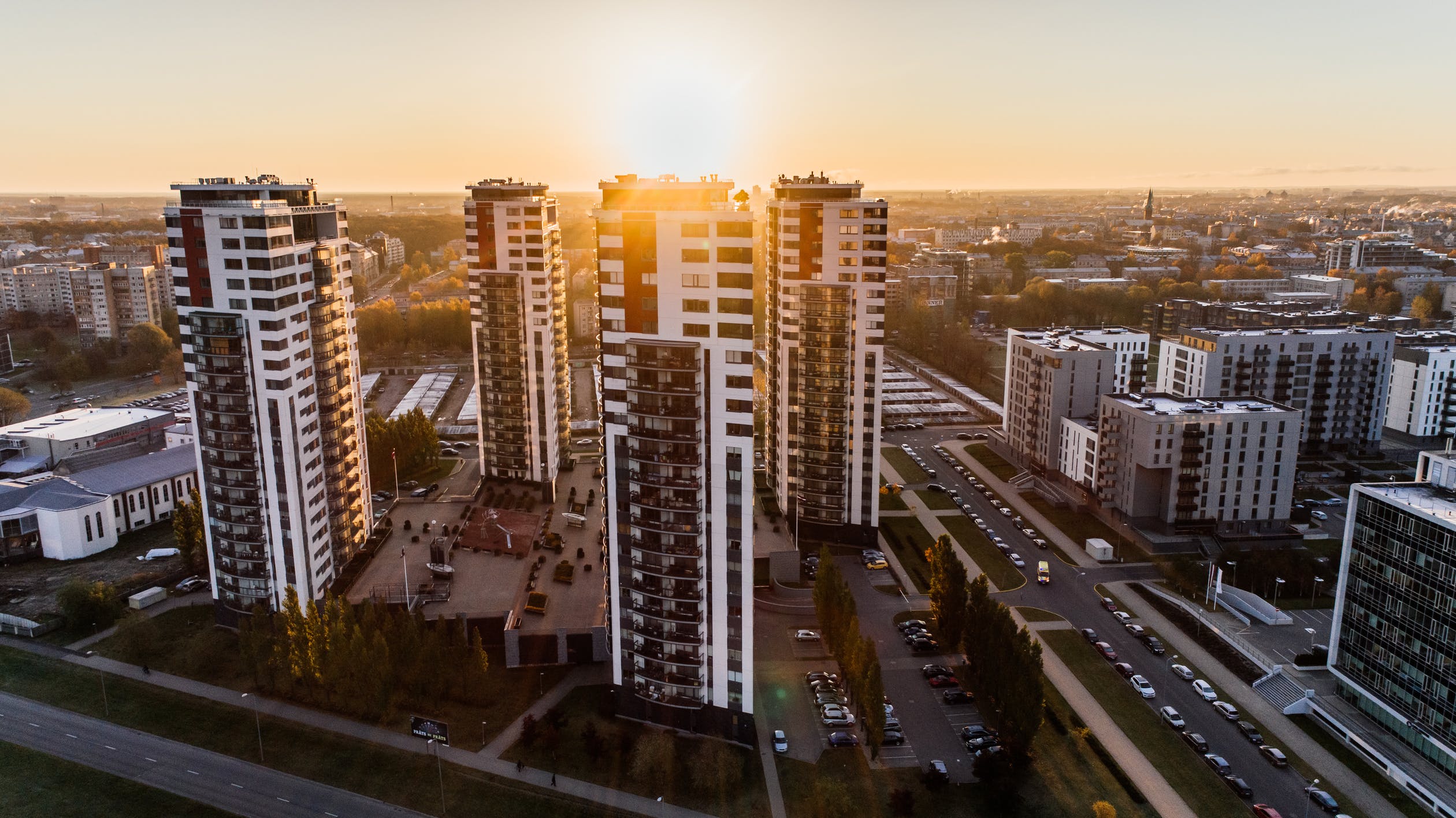The COVID-19 pandemic has taught us that the life we know can change dramatically and suddenly, in ways we never imagined. In a time when staying at home could mean life and death, homeless people are faced with certain death. Do we have adequate affordable housing for all? What exactly does affordable housing mean? Is there more that can be done to put a roof over every head? This article looks at the dynamics of affordable housing.
The Homeless
Sadly, there are people who do not have a place to live. Urban areas are full of homeless people. Slum dwellings and street families are common sights in cities all over the world. While poverty is the greatest cause of homelessness, others include the environment, socioeconomic policies, and political conditions. Homelessness is a multifaceted problem, and there has never been a universally accepted definition. It is a global problem that plagues both developed and developing nations alike, irrespective of their socioeconomic status or cultural backgrounds. The homeless are broadly defined as those who fall into any of these groups:
-
They do not have fixed, regular, and adequate housing for the night, or
-
They reside in a supervised/publicly managed shelter meant to provide temporary living accommodation
Homeless people mostly live in slums, on the street, under flyovers, in subways, or in other public places they find. They have no access to basic amenities, and will even be seen taking a shower at a water hydrant, on the street, not minding the public passing by. Life in shanty accommodations is no better. Residents often have to line up and pay every time they use the communal toilets and bathrooms. In such accommodations, up to 10 people will live in one small room, and privacy is almost totally absent, even for women.
In many urban areas, the homeless population has been increasing at a high rate. The structure of this population is also changing. While middle-aged men are disappearing from this group, more families with young children are becoming homeless. According to national reports, more than 150 million people globally are estimated to be homeless. The number of homeless people in London has increased by 165% since 2010, according to an [article], on the UK Office of National Statistics website. Wikipedia lists Nigeria as having the highest number of homeless people per night, at 24.4M, using data from 2007. On the same list is Egypt, which had an average of 12M homeless people per night, based on data collected in 2013. Sub-Saharan Africa has the world’s highest proportion of urban dwellers living in slums. In South Asia, predominantly in India, large urban populations are still living below the poverty line. It is estimated that 1.8 billion people, representing about 20% of the global population, lack adequate housing.
See article on Urban-rural inequality through HCES
High Cost of Housing
High costs of housing impact more than a family’s wallet. For example, it makes it harder for businesses and institutions to recruit and maintain essential staff such as teachers. Businesses are forced to spend more on employee accommodations, which lowers their profitability.
When the cost of housing exceeds 30% of a low-income household’s income, such families may be forced to choose between one basic necessity and the other. For example, a choice between paying rent and school fees. This is an inhumane way to live, and all stakeholders should work relentlessly to provide affordable housing for all. To do anything meaningful in life, a human being must build the capacity and energy to finish the needed work. Children in homeless families never have a stable settlement to provide a platform for them. Sadly, hunger itself may render such aspirations irrelevant.
An entire nation’s economy can be adversely affected by the high costs of housing. The solution is affordable housing. The government initiates programs to regulate the cost of housing through policies, subsidies, grants, and other initiatives.
What is Affordable Housing?
Countries usually have different definitions of affordable housing, but it generally refers to providing adequate, accessible, and affordable homes to those members of society who live below the median household income. A general rule of thumb is that affordable housing consumes less than 30% of the household’s gross income. The housing is usually regulated, ensuring rent can’t increase dramatically over time.
Governments often launch affordable housing schemes which fund or assist the development of housing projects to make them more affordable for the people. These schemes help the economically weaker sections of society acquire housing within formal systems, to enable their governments to provide basic amenities. Affordable housing schemes provide a range of house sizes and types, including studio apartments and multi-bedroom luxury units.
Affordable housing is usually available for letting, but in some cases, can be purchased. Rental affordable housing is usually owned privately, by local governments, charitable organizations, or housing providers in the community.
The primary consideration in determining the affordability of housing is the people’s disposable income that can be spent on housing. The government shoulders the responsibility of managing the demand for affordable housing in a country, though the private sector plays a significant role too.
Affordable housing goes beyond providing four walls and a roof. People also need access to services, security of tenure, elimination of poverty, and exclusion. As an added advantage, the sheer volume of infrastructure development that is involved in the creation of affordable housing becomes a great source of income for labourers working in construction.
Article exploring – Modular and manufactured home for affordable housing.
Types of Affordable Housing
Emergency Housing
This is accommodation provided for short periods to the homeless, displaced, or persons fleeing from violence and abuse. Priority may be given to families with children, who are also assisted with school enrollment. Tenants in emergency housing shelters will often receive basic resources such as food, healthcare, and employment services. Many shelters help their tenants to get back on their feet before their tenancy period expires, with could be up to six months.
Transitional Housing
This type of affordable housing serves people transitioning from emergency housing to resume normal life after rebuilding it in the secure environment of emergency housing shelters and support. These accommodations have a limited period from a few months to a few years. Congregate living is common in transitional affordable housing, where tenants rent a small room but share common facilities such as kitchens, living spaces, and bathrooms.
Permanent Housing
Occupants of permanent, affordable housing units are expected to stay there indefinitely regardless of unforeseeable conditions. Permanent affordable housing can fall into any of several sub-divisions:
-
Supportive Housing – Permanent housing for persons who need to be assisted to live independently, and who often require medical help. This includes the elderly, those with disabilities, mental illnesses, or substance abusers.
-
Purpose-built Rental Housing – These are up-to-standard and affordable rental houses that are built specifically to provide affordable rental rates to tenants who have applied for assistance. They are usually privately owned but may be run by a hired team. The type of building, floor plans of house units, their sizes, and rent are determined by prevailing conditions in the housing market.
-
Cooperative Housing – Duped ‘co-ops’, this type of affordable housing provides low and moderate-income people with permanent housing. This is often done through subsidized house units, or at market rent. Tenants contribute towards decision making, their time to assist in the upkeep of the shelter, and management of the co-op. This level of involvement makes this type of affordable housing the most autonomous.
-
Non-Profit Housing – These are shelters put up by community development and regional affordable housing non-profit organizations. The goal is to cater to the needy and the elderly, as well as productive households. Non-profit affordable housing also caters to others whose needs are not met by other types of affordable housing. Rent is paid in tandem with a tenant’s income, or at the low end of prevailing prices in the private housing market.
-
Home Ownership – Affordable housing schemes offer many options for permanent homeownership, which include choice of region, single or multi-family units, and varying in quality. Homeowners have taken to building secondary accommodations on their lands such as functional basements or rooftops, and act as landlords, letting out the spaces at the local market rates.
Affordable Housing in India
In India, affordable housing is believed to be the greatest driver of the economy. The government states that “Affordable housing is any housing that meets some form of affordability criterion, which could be income level of the family, size of the dwelling unit or affordability in term of EMI size or ratio of house price to annual income” (High-Level Task Force on Affordable Housing for All, December 2008, p. 7). In the Knight Frank Global Housing Price Index, India ranked the 54th in a study that tracked mainstream residential prices across 56 countries globally and had an on-year property price fall of 2.4%.
Affordable housing has attracted not only the interest of home buyers, but real estate and infrastructure developers have become immensely involved. Government-promoted affordable housing has become lucrative to developers, who enjoy these low-risk projects and cash in big. The rising demand for affordably-priced apartments has prompted the government to sponsor housing projects targeted at those with income below the median household income. Some of the significant initiatives the government of India has launched toward this goal include the following:
Pradhan Mantri Awas Yojana (PMAY-Urban)
The Pradhan Mantri Awas Yojana (PMAY) affordable housing scheme is probably one of the Indian government’s most ambitious plans to meet the demand for affordable housing, with the goal of building 20 million affordable units by 2022. It was launched by the Ministry of Housing and Urban Affairs(MoHUA) in 2015 to address the housing shortage in urban areas, targeting the Economically Weaker Sections and the Low-Income Groups.
Article exploring – PMAY Urban and Gramin
Pradhana Mantri Gramin Yojana(PMAY-G)
At the time of its launching in 1996, Pradhana Mantri Awas Yojana was known as Indira Awaas Yojana, before being reorganized to PMAY-G in 2016. This restructuring of the scheme was to allow it to offer affordable pucca house units to dilapidated settlements. It was initiated to provide affordable housing to the rural areas of the country, excluding Delhi and Chandigarh.
Rajiv Awas Yojana
In 2009, the government launched the Ravij Awas Yojana housing scheme in a move to eradicate slums and illegal constructions in India. The scheme’s vision was to bring all slums under a formal system that would enable the government to provide basic amenities such as electricity, water, and sanitation to the people. The Rajiv Awas Yojana scheme’s planning includes public-private partnerships(PPP) as part of the Affordable Housing in Partnership(AHP). In 2013, the AHP was flagged by the government to be part of the Ravi Awas Yojana scheme, a move that aimed to increase the stock of affordable housing.
DDA Housing Scheme
In 2018, the Delhi Development Authority Housing Scheme was launched to provide affordable apartments for high, medium, and low-income groups, although the economically weaker sections have some reservations made for them. The DDA housing scheme was run fully online, and emphasis continues for online digital management of the scheme. The DDA Housing Scheme employs the first-come-first-serve framework and is expected to offer 4000 flats and 1000 luxury apartments in 2020.
Tamil Nadu Housing Board Scheme
Launched in 1961, the Tamil Nadu Housing Board Scheme has since grown into a solid organization. It has made a significant contribution to the affordable housing aspirations of the country. Under the Tamil Nadu Housing Board Scheme, qualified individuals purchase an application form and submit it with any other required monies. The scheme provides housing to people in the Higher Income Group(HIG), the Middle Income Group(MIG), and the Economically Weaker Section(EWS). Other schemes have been launched as subsidiaries such as the Ambattur Housing Section and Sevvaet Phase III.
MHADA Lottery Scheme
Launched every year, the Maharashtra Housing and Area Development Authority is an annual lottery scheme open to buyers from different income groups. Applications are done online [provide link] and the final lists of accepted applications are published, with the draw taking place at a specified date. Refunds are done afterwards to unsuccessful applicants. This scheme has reserved the majority of the slots for the poorer groups, ensuring affordable homes for them. The MHADA lottery scheme employs tentative pricing which, at the time of this writing, was as follows: EWS: Rs 15-20 lakh LIG: Rs 20-35 lakh MIG: Rs 35-80 lakh HIG: Rs 80 lakh – 5.8 crore
NTR Housing Scheme
Andhra Pradesh’s government launched the NTR Housing Scheme to offer subsidies for property linked with the PMAY scheme, where the beneficiary contributes only one-third of the principal amount. This scheme spans urban and rural areas in the state, targeting the underprivileged. Only citizens of Andhra Pradesh below the poverty line (BLP) are eligible to apply under the scheme, and applicants must not possess any other house or land under the government’s housing schemes, to ensure fairness.
Role of the Private Sector in Affordable Housing
Real estate developers in the private sector have become key players in the provision of affordable housing. Their inclusion has been through private-public partnerships(PPPs) and has been necessitated largely by increasing shifts in public policy on service delivery and relentless waves of technological advancement, which have changed the methods of delivery in housing. Un-innovative financing can lead to the development of slums and informal settlements, but the private sector, through PPP transactions, can bring innovative technology, such as catering to people with disabilities in the designs and be more efficient with delivery. The government provides land and regulations for long-term contracts.
The presence of the private sector in the development of affordable housing provides a better promise of completed projects for low-income urban housing. The innovativeness of the private sector increases the likelihood of modern concepts such as urban farming being integrated into the designs. The social implications of PPPs include slums and informal settlements getting adequate, quality, and affordable housing put up within their neighbourhoods. These facilities the provision of basic amenities by the government, and help reduce political and other animosities in the society. Since large infrastructure projects are monopolistic by nature, the government can exert regulation by linking payments to goal delivery, such as inclusivity outcomes, an example being enhancing gender equity in access to services.
Role of Architecture Design in Affordable Housing
The technological advancement of the last century has brought groundbreaking changes to buildings and construction, allowing designers to become creative and create solutions to previously persistent problems. Other than tight budget constraints, expensive labour, and materials, developers have to deal with community resistance. When many people hear of affordable housing, they often imagine low-quality, ugly, boxy buildings with boring front elevation designs. This causes neighbouring residents to worry about having cheap-looking facades hanging around.
Today, however, architectural designers have advanced their methods, and are able to design decent-looking buildings within constraints. For example, when estimating the cost of the project, the front elevation design of the building takes up about 25% to 30% of the hard costs. Solving such problems is today aided by CAD tools such as 3d modelling software. This outer shell structure includes the windows, doors, and facade. The facade acts as the main thermal barrier of a building and defines how air moves. This will influence the spending on lighting, heating, and cooling.
To balance cost and performance objectives, a strategy that is employed is to focus on the economy of form and selection of materials. Another strategy designers use is to make several small tweaks to a design until more units are achieved. For example, studio apartments and one-bedroom units can be built without hallways. Spaces can also be made flexible, separated by furniture, rather than walls, while doors and walls can be reserved for spaces that need privacy.
There are finer strategies that can be employed in each step of the design to produce functional and beautiful affordable buildings. Architects, with the aid of global professional networks and sophisticated computer software, are helping to create affordable housing that not only looks good but is fully functional. Infrastructure development is a significant driver of an economy, and architecture has a vital role to play in putting a roof over every head.
Conclusion
Affordable housing is a solution to homelessness, a foundation for better lives and a brighter future for any country. The ability of people to have enough disposable income to buy homes depends on the economic conditions of a nation. The cycle of poverty, which eventually leads to homeless, often requires intervention from an external force to get one out of poverty. Affordable housing initiatives are external interventions that aim to provide a secure platform for people to improve their lives. As nations recover from the pandemic, sales of affordable housing are expected to increase dramatically all over the world, and growth is expected in the housing sector for the foreseeable future.
Visit our blog page to read architecture related content.





